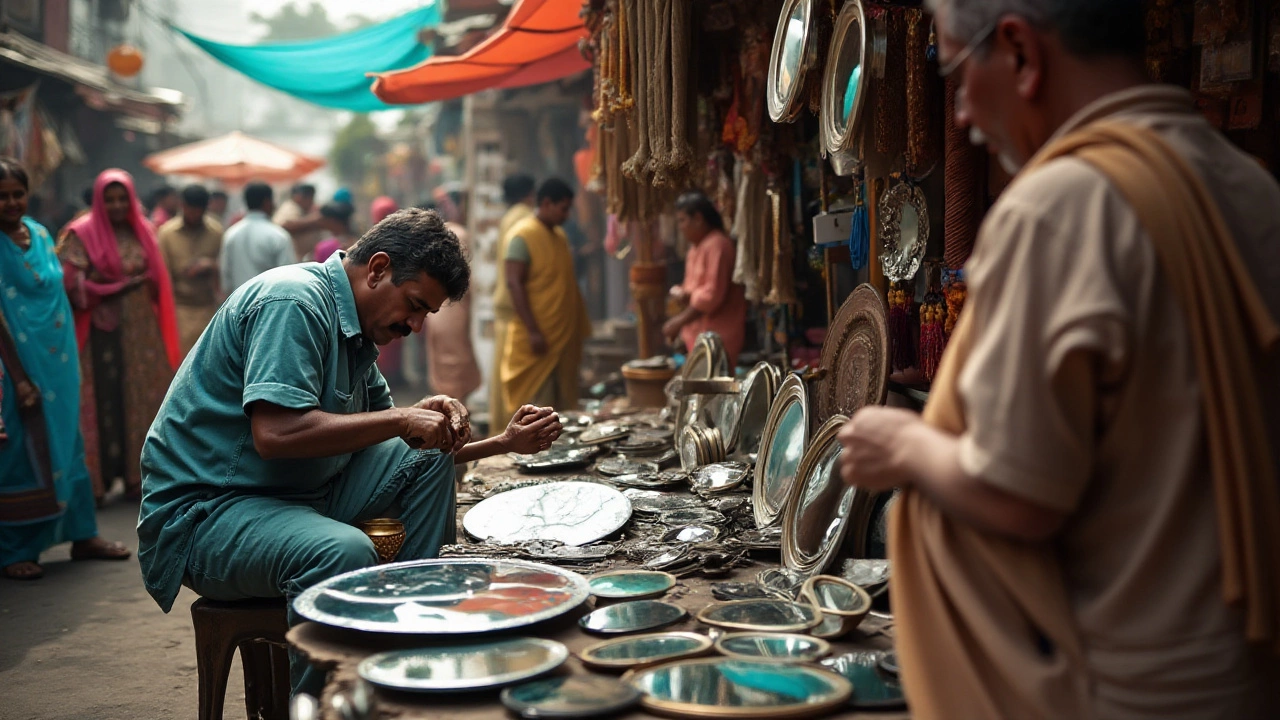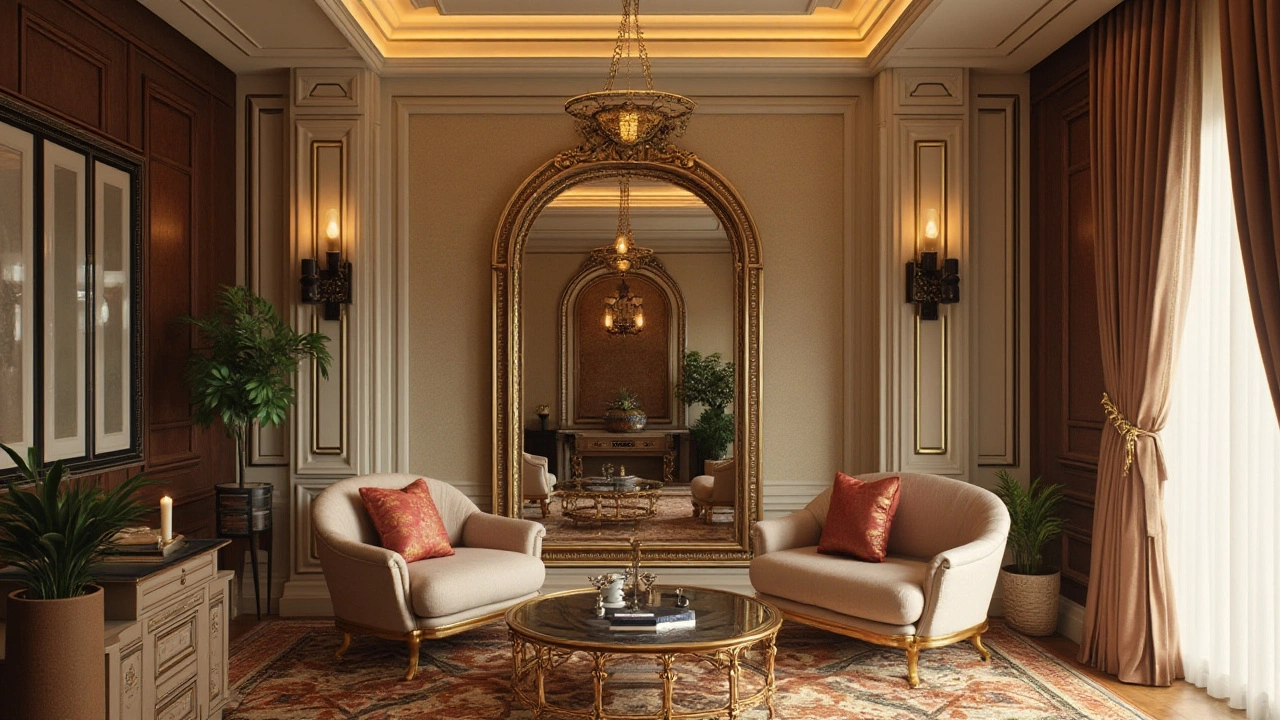Exploring the Quality Variations in Mirrors

Mirrors, the portals through which we view our reflections, come in a surprising array of qualities. At first glance, many might seem alike, but delve a little deeper, and the differences in quality become apparent. Whether it’s for design aesthetics, practical use, or just about any purpose, the quality of a mirror can significantly alter its effectiveness.
From the materials used in their creation to the processes employed in their crafting, mirrors can range from simple glass and backing to intricately coated marvels of reflection. High-quality mirrors can offer clearer images, resist aging better, and become integral pieces of home decor or professional tasks.
Knowing the right aspects to look for can transform your mirror-buying experience from a guessing game into a confident choice, ensuring that whichever you select, your mirror reflects the best of you—and not just literally.
- Understanding Mirror Quality
- Materials Used in Mirror Manufacturing
- The Role of Coatings
- Clarity and Distortion in Reflections
- Durability and Longevity
- Choosing the Right Mirror
Understanding Mirror Quality
When it comes to mirror quality, the details truly matter. At first sight, all mirrors might look the same, presenting a shiny surface that reflects light and images back to us. Yet, the craftsmanship and materials that go into making these reflective surfaces vary immensely, and these factors play a crucial role in determining the mirror’s performance and longevity. The backbone of a mirror is typically a pane of glass, but not all glass is created equal. High-quality mirrors use glass that is free from impurities and has a consistent thickness, ensuring a distortion-free reflection. This clarity is essential, particularly in applications like makeup mirrors or decorative pieces where precision is key.
Glass Thickness and Quality
The thickness of the glass used in mirrors can greatly affect their durability and clarity. Thicker glass tends to support a flatter surface, which contributes to clearer reflections and less distortion. Mirrors generally vary between 2mm to 6mm in thickness, with thicker options providing more stability and robustness. This thickness ensures the mirror can be hung more securely and is less prone to warping over time. Additionally, the purity of the glass matters. Glass with fewer impurities helps in avoiding hazy reflections, where the image appears blurred or indistinct. A high-purity glass is clear and devoid of any inclusions or bubbles that could disrupt the reflection.
Quality mirrors typically employ a silver backing because it provides better reflectivity compared to other metals like aluminum. A quote from John Smith, a well-respected glass artisan, states that "The quality of a mirror depends heavily on the purity of the silvering process." Ensuring that the backing is applied evenly and is protected by a robust sealing layer prevents the silver from tarnishing, a common problem that leads to the dreaded 'black edge' effect. This is where moisture seeps in, oxidizing the silver and causing dark spots to appear.
The Manufacturing Process
The process by which a mirror is made can also have a substantial impact on its quality. Crafted with care, high-quality mirrors are subjected to rigorous processes that ensure each layer of the mirror—from the glass pane to the reflective coating and protective sealing—is perfectly aligned and free from any defects. The silvering process, for instance, involves depositing a thin layer of silver nitrate onto the glass, which is then reduced to elemental silver. This process must be perfectly controlled to avoid any inconsistencies in reflectivity. Additionally, an essential part of producing high-quality mirrors is the coating that seals the silver layer. This layer is typically made from copper or other protective materials that keep the silver from oxidizing, which is crucial for maintaining reflectivity over time.
Understanding the various elements of mirror quality can help consumers make informed decisions when purchasing. By focusing on factors like glass thickness, material purity, and manufacturing excellence, buyers can select mirrors that not only meet their functional needs but also stand as durable investments. Knowing these details demystifies the selection process, making it more than just a choice based on size or frame design.
Materials Used in Mirror Manufacturing
When embarking on the journey to purchase a quality mirror, it’s vital to understand what's beneath the surface. Mirrors are not just pieces of glass. They are, in essence, marvels of reflective engineering hinged on an array of materials that go into their makeup. At the heart of this reflective wonder is the glass, but the secret lies in the coating which turns it from a mere transparent pane into a reflective surface. Traditionally, the most common backing for mirrors has been silver nitrates, owing to their superior reflective properties. In earlier times, artisans painstakingly hand-applied this rare metal, ensuring an even and smooth layer. This process is often referred to as 'silvering' and serves as the basis for most everyday mirror manufacturing.
Beyond the silvering lies another layer of sophistication — the protective back coating. This layer is crucial as it shields the reflective surface. Typically made from copper to prevent any silver degradation, and finished with multiple coats of paint for added protection, it keeps tarnish away. The intricate coordination between these materials determines a mirror's quality. While most mirrors utilize an aluminum layer in budget versions, opting for polished, high-quality mirrors means sticking to silver — a detail that vastly elevates the reflection clarity and longevity. The choice of backing material is as crucial. Modern innovations have introduced tempered glass, which, apart from offering great structural integrity, also adds safety, shattering less dangerously than ordinary glass.
For those seeking something out of the ordinary, opt for acrylic mirrors. Lightweight and shatterproof, they bring a practical twist to traditional mirror designs. However, they may compromise a bit on clarity compared to glass versions. As appealing as these modern alternatives can be, it's important to recognize that the quality of a mirror is as much about the craftsmanship as it is the material. A famous quote from the Glass Association once stated,
"The elegance of a mirror reflects the skill at its creation, with every layer adding depth to its allure."
Environmental Considerations
An equally crucial aspect is the sustainability of materials. Eco-conscious buyers should seek mirrors manufactured with less harmful processes. This includes choosing glass with recycled content and opting for lead-free paint options. Many manufacturers today aim to reduce their carbon footprint and resource use, appealing to an increasingly environmentally-aware consumer base. Glass with lower iron content is also used in some high-end mirrors to give an ultra-white, high-clarity finish, which starkly eliminates the green tinge found in regular mirrors. This not only provides a clearer reflection but also signifies a higher standard, often found in professional or luxury settings.

The Role of Coatings
The coatings applied to mirrors play a critical role in their functionality and longevity. A mirror is more than just glass; it is the culmination of a delicate balance between reflective surfaces and protective layers. Without proper coatings, a mirror would merely be a sheet of glass, lacking the reflective property that has made mirrors essential throughout history. This reflective nature is usually achieved by applying a thin layer of metal to the back of the glass, traditionally silver, although aluminum has become increasingly common due to its affordability and comparable reflectivity. The choice between silver and aluminum affects the reflection's brightness and clarity, with silver traditionally offering superior reflective quality but at a higher cost.
Coatings are not limited to reflective metals. Protective layers are equally essential. These layers shield the delicate metal from oxidation and damage. Common protective backings include copper and several layers of paint, which serve as a barrier against moisture and other environmental factors that can tarnish the reflective surface. It's these coatings that ensure a mirror maintains its reflective quality over time, resisting the tarnish and haziness that can occur otherwise. A highly polished and well-coated mirror can transform spaces, creating depth and intrigue, whether part of a chic decor ensemble or a functional bathroom essential. Coatings ensure that the reflective surfaces remain pristine and clear, avoiding unwanted distortions that could alter the day's makeup application or mar the interior design setup.
The application process of these coatings is as much an art as it is a science. It involves precision in vacuum environments where metals are vaporized and evenly deposited onto the glass surfaces. This meticulous process ensures a flaw-free finish, pivotal for producing high-quality mirrors. Innovations in technologies have also seen improvements in coatings, making them more durable and long-lasting while maintaining clarity. A fascinating insight was given by the noted expert in materials science, Dr. Jane Thompson, who said in an interview,
"The advancement in vacuum coating technologies has revolutionized how we perceive and use reflective surfaces, allowing mirrors to transcend their traditional boundaries."Indeed, the evolution of these coatings continues, promising even brighter and more resilient mirrors. In some modern manufacturing, for instance, mirrors designed for extreme environments, like space telescopes, utilize ultra-thin, ultra-reflective coatings applied through cutting-edge deposition techniques. These mirrors do not just have enhanced reflection; they often undergo rigorous testing to ensure resilience in adverse conditions.
Clarity and Distortion in Reflections
When gazing into a mirror, its clarity—or lack thereof—can determine much about its suitability for both aesthetic and practical roles. Clarity in a mirror is characterized by its ability to provide a true, undistorted image. Generally, a clearer mirror features higher-quality glass and more refined coatings, making it a preferred choice for applications requiring precision. Low-quality mirrors may introduce distortion, bending the reflection and leading to visual misconceptions. This can result from thicker glass or imperfections in the glass' surface, both of which alter light's natural path as it reflects.
Mirrors are an essential tool in tasks that demand accuracy, such as makeup application or interior design. In scenarios where distorted reflections won't cut it, selecting a high-quality mirror becomes more than a matter of aesthetics—it's a necessity. Scientific advancements have enhanced our understanding of reflective surfaces, pushing manufacturers to produce better mirrors. The glass used in quality mirrors often undergoes rigorous processes for extra smoothness to ensure light is reflected uniformly, thus minimizing distortion.
"A mirror reflects the true nature of light on a pristine surface, opening windows to self-perception and reality," noted acclaimed optical physicist Dr. Eleanor Waverly.
Distortion is usually more pronounced at the edges of a mirror. This effect, known as edge distortion, happens more frequently in lower-quality mirrors where the manufacturing processes paled in comparison to their higher-end counterparts. For those purchasing mirrors specifically for areas like dressing rooms or high-design spaces, these aspects can prove crucial. Investing in mirrors that boast high reflective accuracy often means opting for those backed with layers like silver or chrome, treated to resist oxidation and enhance clarity over time.
The coating materials used play pivotal roles in mirror performance. Silver and chrome are popular choices; each has strengths, though silver typically offers the brightest reflection due to its innate reflective properties. However, silver's susceptibility to tarnish implies the need for adequate protective layers. Alternative coatings may include aluminum or copper, each selected based on the intended durability and clarity. These coatings maintain clarity by protecting the glass surface from air exposure, thus preventing layer deterioration that could warp the reflections.
A typical issue with many low-quality mirrors is 'ghosting'—where multiple, faint reflections appear instead of a single true image. Such occurrences often stem from improper adhesion of the reflective layer to the glass or from using poor-quality adhesive backing. Ghosting diminishes the mirror's clarity, making it difficult, if not impossible, to rely on for tasks insisting on high accuracy. Thus, understanding the nature of a mirror's clarity and what affects it can greatly aid in deciding which reflective surfaces best fit the task at hand.

Durability and Longevity
When considering the purchase of a high-quality mirror, one must delve into the durability and longevity that comes with such a choice. It's not just about how the mirror will look today, but how it will maintain its clarity and attractiveness over years of daily use. One of the essential factors determining a mirror's longevity is the coating applied to the back of the glass. Most mirrors are made by coating a piece of glass with a thin layer of metal, typically silver or aluminum, which is then protected by a layer of lead or copper-free paint. This paint is critical as it seals the edges, protecting against delamination or oxidation, both of which can cause the mirror to lose its reflective ability over time.
For instance, in coastal areas where humidity and salt can accelerate mirror deterioration, additional protective measures can be beneficial. Consider the use of mirrors specifically designed to withstand such harsh environments, making them inherently more durable. A common misconception is that thicker glass always equates to a better mirror. While thickness might aid in preventing breakage, it's the quality of the materials and craftsmanship that truly determines durability.
"When it comes to mirror longevity, proper maintenance is as crucial as the initial quality," notes renowned interior design expert, Jane Finn. "A high-quality mirror can last decades, but only if it is cleaned regularly with non-abrasive materials and kept free from excessive moisture."
Statistics indicate that using non-corrosive supports and hangers, and regularly checking for edge oxidation, can significantly extend a mirror's lifespan. A study by the Glass Industry Research Group suggests that mirrors with copper-free coatings last up to 30% longer under typical usage conditions due to their enhanced resistance to corrosion. This offers a reassuring nod to those investing in more premium options in the market. Regularly inspecting the condition of a mirror's mounting hardware also plays a critical role in ensuring it remains safely affixed to the wall or its frame, preventing unfortunate accidents or premature wear and tear. Incorporating these proactive steps can ensure that your mirrors continue to serve you faithfully and beautifully for many years. Whether it becomes the focal point of a room or an understated functional necessity, a mirror's value goes well beyond its reflective properties into the realms of enduring, reliable design.
Choosing the Right Mirror
Stepping into the world of mirrors is much like stepping into a gallery of reflection. Mirror quality ranges widely, and making a discerning choice can transform any space. To choose the perfect mirror, it’s essential to evaluate what exactly you need the mirror for and where it will be used. Factors such as the location it is intended for, the level of activity in that area, and the specifics of light play a significant role in determining the right fit.
One critical thing to consider is the quality of the glass and the backing. High-quality mirrors usually comprise thick glasses with a polished edge, which often result in more precise and true reflections. The backing is also vital as it acts as the reflective layer. Silver-backed mirrors tend to offer superior reflections compared to their aluminum-backed counterparts. Reflective surfaces combined with high-grade coatings can deflect blemishes and provide exceptional clarity for years.
The thickness of the mirror also impacts its strength and reflection quality. Common mirror thicknesses include 3mm, 4mm, and 6mm. While thinner mirrors can be more economical and easier to mount, they may be prone to warping and distortions. Thicker mirrors provide better depth and resistance to bending, delivering truer reflections. A mirror that is too thin can distort reflections and might not stand the test of time in high-traffic areas.
Another crucial aspect is the type of coating used in the mirror. Whether you seek mirrors that resist tarnishing or those able to reflect a room’s colors vividly, the coating matters. Certain coatings can even endure humid environments, like bathrooms, without succumbing to damage. This is particularly essential if you live in areas where condensation might become an issue. A helpful tip is to look for mirrors that have been treated to resist moisture.
According to John Smith, a renowned interior designer, "A mirror is not just about reflection. A quality mirror enhances the entire space, bringing light into corners you never imagined."Investing in a high-quality frame is another factor to bear in mind. A good frame not only complements the decor but reinforces the structure of the mirror itself. For those aiming to create an artistic flair, mirrors with ornately designed frames can act as centerpieces in rooms. From minimalist metal frames to elaborately carved wood, the choice of frame speaks volumes of one’s style.
Last but not least, consider the purpose. If you’re looking for a mirror for detailed tasks like makeup or personal grooming, then opt for mirrors that offer magnification. Magnification doesn't just highlight details; it also provides a new perspective you wouldn’t get with a standard mirror. This component often proves to be a worthy addition to your morning routine.